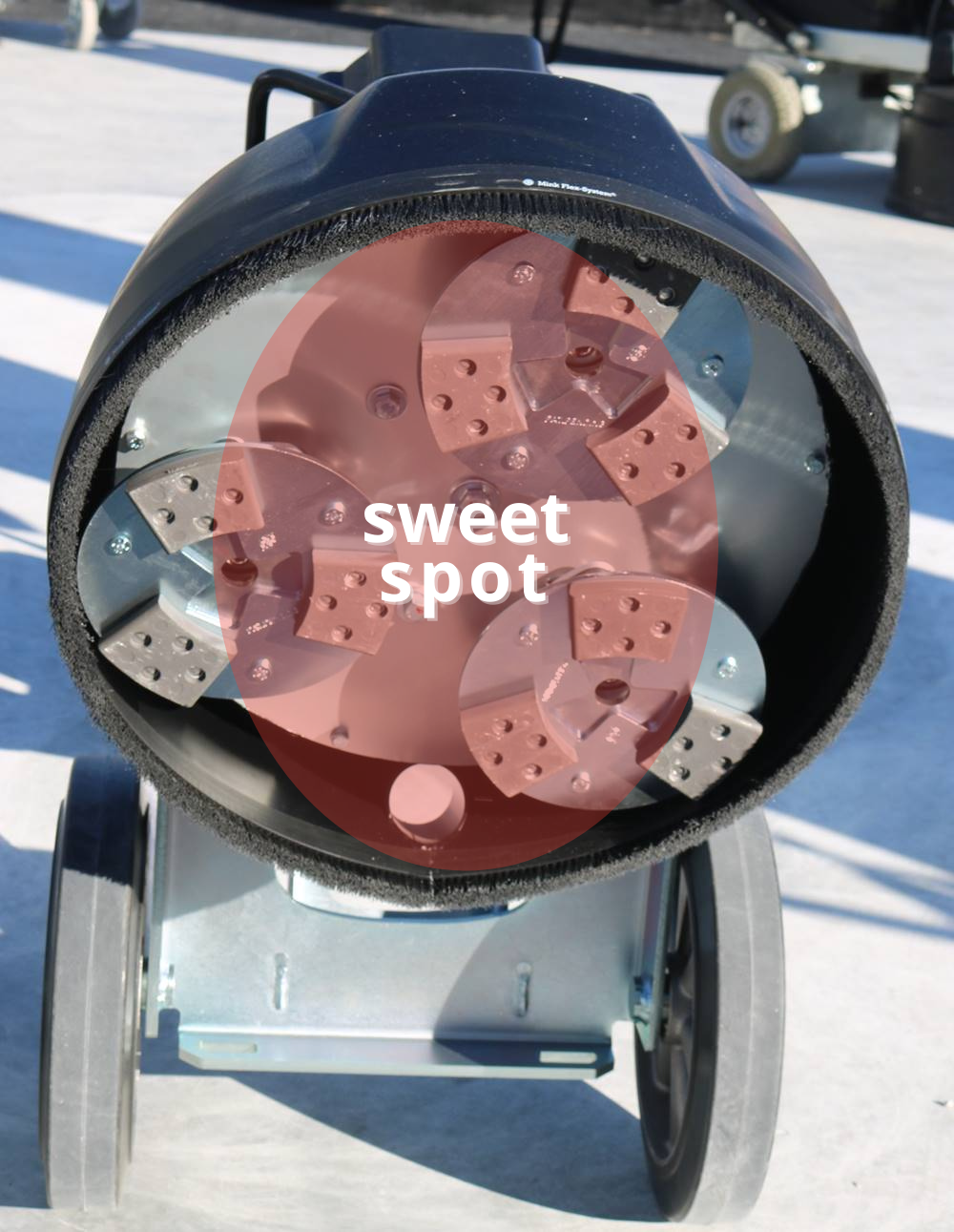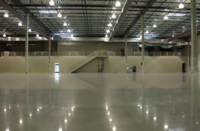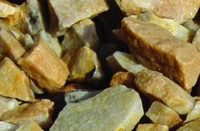 How much overlap is needed when grinding, honing and polishing? And how do we find a concrete grinder’s sweet spot?
How much overlap is needed when grinding, honing and polishing? And how do we find a concrete grinder’s sweet spot?
These questions refer to the process of making consecutive passes when processing a bonded abrasive polished concrete (BAPC) floor. Truth be told, all concrete will show and tell us the answer if we watch and listen.
In this industry, there are as many answers as operators. However, by learning this process an educated decision can be made. No more guessing, hoping and wasting time.
Most polishing companies have a unique combination of equipment and machines they’re comfortable using. (Most likely they’re not using the same equipment I worked with on the previous job.) I find it fascinating each time I observe an operator making the decision of how much overlap is required. Some don’t even pay any attention. They just do what they have done every other time and hope it works out in the end.
Many rationalize that if the floor isn’t right, it’s the architect’s fault for a bad “means and method” specification. Many don’t even know what they should be looking for. Methodologies run the gamut.
Some examples
Operators travel up and back in the same path/pass. Or they do that same process but move 6 inches toward the last pass. They might instead travel forward only to make a complete turn around and head down the same path a second time. Or maybe they make a back pass over one-third and don’t return down the row that was just cut.
How does any person know what the right answer is? I’ve asked a couple hundred operators and they say different things:
- This is how I was taught, and it works.
- It’s a waste of time to overlap much.
- It all looks the same in the end.
- Or they simply answer: I don’t know. It’s the way I’ve always done it.
Only a few times have I seen someone stop, examine and adjust. This would be time well spent.
While watching and listening, my brain starts to fire on all circuits. Subsequently, I start to ask the operator a bunch of questions. Like, why is there an uneven aggregate reveal? How do you think that happened? Will that even out? Why are there random scratches that aren’t being replaced? Why are there areas that are lighter and other areas that are darker?
You get the point. The goal is to get them to learn and think on their feet.
Here’s the tip
Let’s learn how to determine how much overlap is needed when processing a floor, thusly determining a concrete grinder’s sweet spot.
First, obtain access to a concrete slab area with a finished surface that hasn’t been abraded. Then outfit your specific equipment with a set of 80-grit soft-bond metal diamonds.
(A soft bond will cut all concrete. So, only do this for this test. Once you understand the sweet spot, use the Mohs hardness test to determine the correct match for that slab.)
Now, grind 10+ feet forward (at an appropriate pace and speed for the machine’s first cut) until the operator is at the wall. No waggling. Now pull back in the same path. Stop and remove the equipment from that area. Clean the area with a vacuum and inspect. If the area isn’t clean enough, use an auto-scrubber.
The results:
- Part of the concrete has been removed and has revealed some of the matrix.
- Definite scratches will be noticeable.
- Part of the concrete will have basically remained untouched.
Measure the width of the surface area that looks like it has been ground effectively. This area is the sweet spot!
When using a planetary machine, the area is usually underneath the motor in the middle. When measuring, it will be obvious that only 18 to 20 inches are really cut well. This is also assuming it’s a +30-inch machine. This means 10 inches on either side of the grinder aren’t getting fully refined or scratched. Consequently, you’ll find that a one-third overlap is a GREAT idea.
If done pass after pass, the sweet spots will abut against one another, maximally refining the floor. Thus, you’ll produce BAPC that’s as uniform as the concrete that was finished allows.












